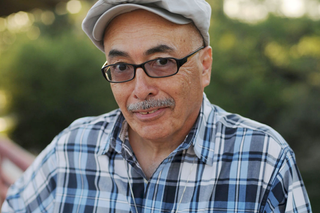Poetry can support social-emotional learning as it connects with students in a profound way, says former U.S. Poet Laureate Juan Felipe Herrera.
“Poetry is a free space,” he says. “It's your internal free space in your mind, your feelings, the words you use, and you imagine it with images and landscapes. Your heart is boiling or heating up or flaring or volcanically wanting to explode. The poem is there for you; it'll contain that fire.”
Within that free space, students have a chance to delve into trauma and other serious issues on their minds. “They talk about rape, they talk about suicide,” Herrera says. “Poetry then is the place, you can just open that mountain of fire, and write it and speak it and present it. And then we hear and we feel it. And it's a great way to find healing.”
Herrara, who was U.S. Poet Laureate from 2015 to 2017, will be the keynote speaker at NYC DOE’s Beyond Access Forum: Moving Forward Together on November 2. The virtual event, which is open to all educators, will run 8 a.m.-2:30 p.m. ET.
The child of migrant workers, Herrera is an alum of UCLA and Stanford University, and obtained his MFA from the University of Iowa Writers’ Workshop. During his keynote, he will share a poem aimed at inspiring educators and their students.
“I want to uplift people's lives in whatever way I can,” he says. “I'm not Mighty Mouse -- I'm Minnie Mouse, I'm Micro Mouse. But I do want to help in whatever way I can, or inspire in whatever way I can.”
His poetry collections include 187 Reasons Mexicanos Can’t Cross the Border: Undocuments. He has also created work for children, including Imagine and Jabberwalking, and much of his outreach work focuses on connecting poetry with young people.
More Than Words on Paper
As Poet Laureate, Herrera helped to launch “Wordstreet Champions and Brave Builders of the Dream,” a program in partnership with Chicago Public Schools. The effort saw Herrera connecting with nearly 40 English teachers to help expand their perception of what a poem was and how it could be created. In one exercise, teachers faced each other in two rows and talked, while other teachers walked between the rows writing down snippets of conversation they heard and then using that as the basis of a poem.
“We cut up paper, we used colors, we stood in lines, we shouted at each other, we walked through these little tunnels of people talking like little gauntlets. We painted things and made symbols,” Herrara says.
The educators then brought these ideas and energies back to their district.
Herrara also coordinates the Laureate Lab Visual Wordist Studio at Fresno State, which is also geared toward pushing the boundaries of what constitutes a poem.
“It comes from the whole idea of not being so squashed into a small space talking about poetry. As I have taught through the years, students come into the creative writing program, wherever I've been, and they want to do art also. They're painters also, and they're writers, but there's no way for them to paint in their creative writing courses,” he says. “They want to merge writing and painting, and writing and sculpture, writing and dance, writing and performance. And all that is kind of pushed aside usually in a traditional creative writing workshop.”
This philosophy also applies to mediums increasingly popular with students today such as social media.
“Poetry, like every expressive form, is multi-dimensional, but we just seem to have things in little boxes,” he says. “We can dance a poem, we can collage a poem, we can YouTube a poem. And we can do simultaneous expressive formats; playing jazz on the corner, doing YouTube at the same time, drawing and dancing at the same time.”
A Way of Learning About the World
No matter what form a poem takes, it remains a form of personal expression, which is why it’s such a powerful medium for students, Herrera says.
“It’s a perfect place to express all that because it's so personal. What you get with poetry, it's just one hundred percent, one thousand percent, personal. It's the real you talking, it's not the school you,” he says. “So it's total expression, personal yes, but it also provides a possibility of new thinking and a new way of seeing things.”
This can help students learn more about the world and themselves as well as help educators understand their students. Herrera says a good poem might cause a teacher to say, “Oh, I have to look at this issue differently now. I have to look at young people differently now because we hear a new thinking.”
Herrera’s work is also steeped in respect for the teachers we find in all walks of life, from parents to guardians as well as the professional educators in our lives. “It's good to support our teachers because without teaching we have nowhere to go,” he says. “We are lost.”

